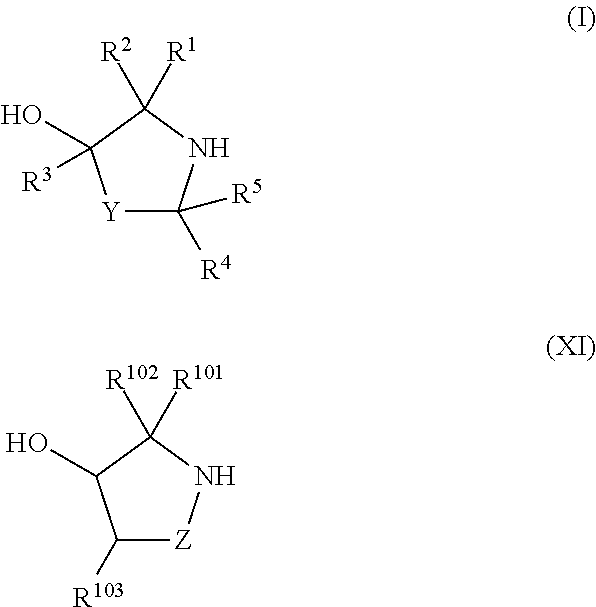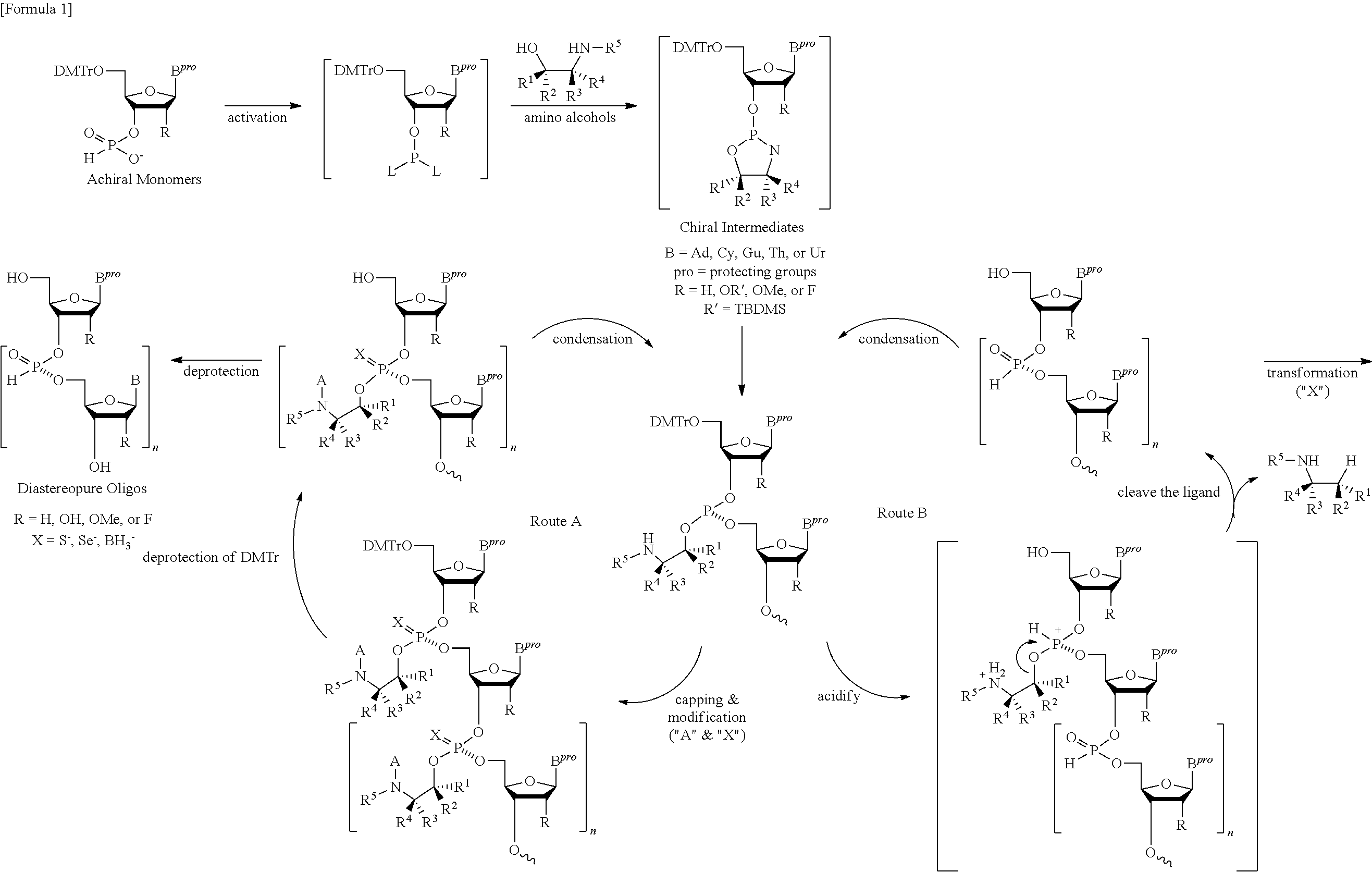Chiral auxiliaries
a technology of auxiliaries and auxiliaries, applied in the field of chiral auxiliaries, to achieve the effect of high asymmetric yield
- Summary
- Abstract
- Description
- Claims
- Application Information
AI Technical Summary
Benefits of technology
Problems solved by technology
Method used
Image
Examples
example 1
(a) 3-Cyano-3-phenylisobenzofuran-1(3H)-one (1)
[0082]
[0083]A mixture of diethylaluminum chloride (Et2AlCl, 34.5 mL of 0.87 M solution in hexane, 30 mmol) and trimethylsilyl cyanide (3.7 mL, 30 mmol) was stirred at room temperature for 30 min, and the mixture was added via cannular at 0° C. to a solution of methyl 2-benzoylbenzoate (6 g, 30 mmol), which was dried by azeotropy with dry toluene, in dichloromethane (DCM, 12.5 mL). After the mixture had been stirred for 1 hr, the reaction was quenched with ice-cooled 3 M aqueous sodium hydroxide (250 mL), and the mixture was extracted with dichloromethane (200 mL, 3 times). The organic layer was washed with saturated brine (300 mL), and back-extracted with dichloromethane (200 mL, twice). The organic layer and washings were combined, dried over sodium sulfate, and concentrated. The residue was chromatographed on silica gel (150 g) eluted with ethyl acetate-n-hexane (1:4) to give Compound 1 (5.68 g, 97%) as white solid.
[0084]1H NMR (300 M...
example 2
(a) General Procedure for the Solid-Phase Synthesis of X-Phosphonate DNAs Using a Class of Chiral Auxiliary Removable with Acid (General Formula I)
[0118]5′-O-(DMTr)nucleoside (0.5 μmol) loaded to a HCP or CPG resin via a succinyl or oxalyl linker is treated with 3% dichloroacetic acid (DCA) in dichloromethane for the removal of the 5′-O-DMTr group, washed with dichloromethane and dried in vacuo. Chain elongation is performed by repeating the following steps (a) and (b). (a) Coupling reaction (5 min) using a solution containing the corresponding pre-activated monomer solution under argon. After the condensation, the solid support is washed with dry acetonitrile (MeCN) and dichloromethane. (b) Removal of the 5′-O-DMTr group and the chiral auxiliary simultaneously by treatment with 3% dichloroacetic acid in dichloromethane and triethylsilane (1:1, v / v), and following washings with dichloromethane and dry acetonitrile. After the chain elongation, the resultant oligonucleoside H-phosphon...
example 3
(a) General Procedure for the Solid-Phase Synthesis of X-Phosphonate RNAs Using a Class of Chiral Auxiliary Removable with Acid (General Formula I)
[0126]5′-O-(DMTr)ribonucleoside (0.5 μmol) loaded to a HCP or CPG resin via a succinyl or oxalyl linker is treated with 3% dichloroacetic acid in dichloromethane for the removal of the 5′-O-DMTr group, washed with dichloromethane and dried in vacuo. Chain elongation is performed by repeating the following steps (a) and (b). (a) Coupling reaction (15 min) using a solution containing the corresponding pre-activated monomer solution under argon. After the condensation, the solid support is washed with dry acetonitrile and dichloromethane. (b) Removal of the 5′-O-DMTr group and the chiral auxiliary simultaneously by treatment with 3% dichloroacetic acid in dichloromethane-triethylsilane (1:1, v / v), and following washings with dichloromethane and dry acetonitrile. After the chain elongation, the resultant oligonucleoside H-phosphonates on the ...
PUM
| Property | Measurement | Unit |
|---|---|---|
| Fraction | aaaaa | aaaaa |
| Volume | aaaaa | aaaaa |
| Volume | aaaaa | aaaaa |
Abstract
Description
Claims
Application Information
 Login to View More
Login to View More - R&D
- Intellectual Property
- Life Sciences
- Materials
- Tech Scout
- Unparalleled Data Quality
- Higher Quality Content
- 60% Fewer Hallucinations
Browse by: Latest US Patents, China's latest patents, Technical Efficacy Thesaurus, Application Domain, Technology Topic, Popular Technical Reports.
© 2025 PatSnap. All rights reserved.Legal|Privacy policy|Modern Slavery Act Transparency Statement|Sitemap|About US| Contact US: help@patsnap.com



